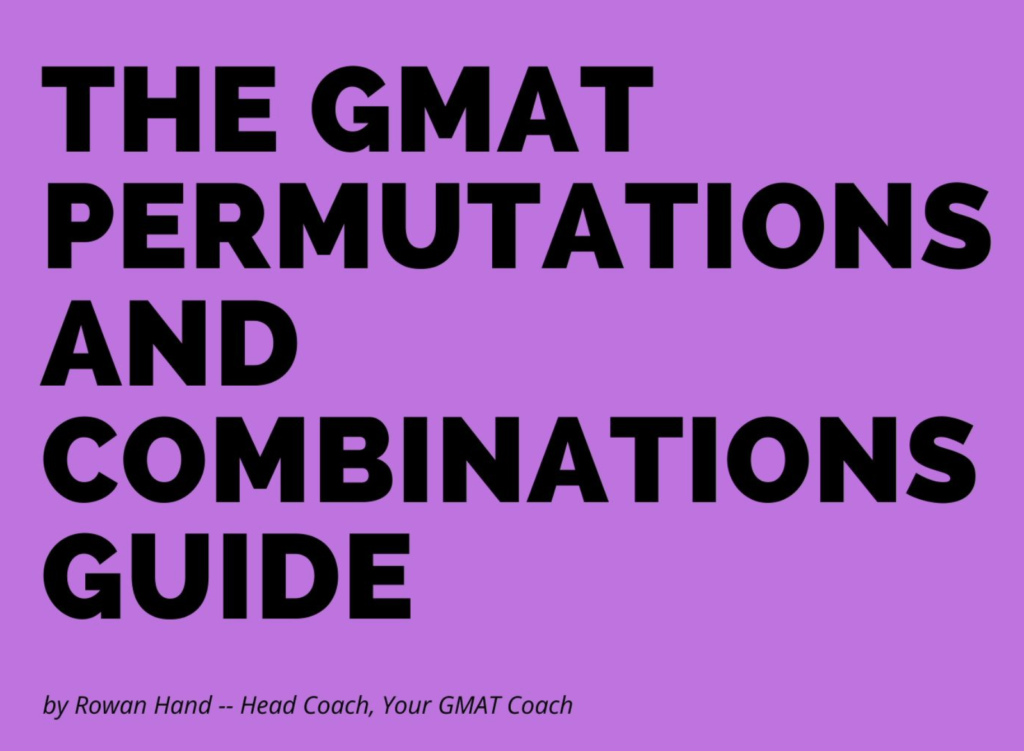Arithmetic–or calculation for calculation’s sake–is a waste of time on GMAT Quant Questions.
There–I said it.
Allow me to add a premise to my argument: insecurity plays a huge role in GMAT Quant Questions. Chew on that for a moment, and let this sink in:
Already the human computer is widely displaced by mechanical and electrical computers of far greater speed and efficiency. If, then, [a person]’s principal asset and value is [his or her] brain and [his or her] ability to calculate, he will become an unsaleable commodity in an era when the mechanical operation of reasoning can be done more effectively by machines.
–Alan Watts, 1951
How is all this related to GMAT Quant Questions?
Put simply, insecurity is arguably one of the driving forces of the design of the test. The writers of the GMAT are fully aware that the testtaker experiences anxiety about the test.
YOU MAY WELL BE CALCULATING UNNECESSARILY BECAUSE YOU DON’T KNOW WHAT ELSE TO DO.
For a test-taker anywhere between 500- and 700-level, this is likely to pose a significant problem.
Usually this problem manifests itself in wasting a lot of time on pointless calculations, or what is known as Wheel-Spinning.
But why? Because we feel comfortable doing arithmetic. It’s something familiar—it brings us back to childhood.
Our Western education system is totally outmoded and is teaching us to calculate things using a few fixed mechanisms within Arithmetic (long multiplication, long division, etc.) that are performed much more quickly and easily by a calculator or computer—or, for that matter, another person who works for cheaper.
The GMAT doesn’t buy that.
What the GMAT teaches is Critical Analysis—Arithmetic is a total afterthought.
If you can’t figure out WHAT THE QUESTION IS ASKING, you’ll be doing Arithmetic all day long and quite possibly never arrive at a solution.
If you CAN figure out what the question is asking, you can quite often ignore 80-90% of the Arithmetic and still arrive at the answer quickly and easily.
Being able to understand the question doesn’t involve arithmetic calculation. Disturbingly, arithmetic calculation might well be leading you away from the correct answer!
Let’s Step Back for a Second
Anxiety tends to be why we engage in Unnecessary Arithmetic.
What happens as soon as the average test-taker experiences anxiety? There are three common possibilities:
1) Shutdown – the most severe anxiety response; words swim on the page and it seems like there is no hope of solution; there appears to be no way to tackle the question.
2) Wheel-Spinning – the middlemost anxiety response; we don’t really understand where to go, so we click over into doing whatever we can actually figure out what to do – for GMAT Quant questions, this is usually pointless arithmetic; this is why GMAT Quant questions are full of useless busy-work that we will fall into when we aren’t keeping our eyes on the ball.
3) Critical Analysis – the highest-level response; assumes the arrogance of “this question is solvable if I can crack it open… now how do I do that?”; ask whether you’re wasting your time.
Let’s address the topics one-by-one:
1) Shutdown
>The way around Shutdown is simply to learn math concepts and learn to read each question step-by-step.
The more frustrating or confusing the question looks, the more likely there is to be a very simple workaround or “clever solution” that doesn’t necessarily take a long time.
First, identify the topic of the question.
Look in the solutions of the Official Guide for the full list of topics.
Is it Properties of Numbers? Arithmetic? Combinatorics? Coordinate Geometry?
Next, identify what particular concept this question discusses.
We know it’s Properties of Numbers, so is it about divisibility? Least Common Multiple? Evens and Odds?
Third, think about how the concept at hand might be addressed.
For example, do you know any tricks or tools that might be used with this? Many types of questions are associated with a set of “best practices.”
For example, if it’s a factoring question, pull the common terms of the front of the bracket. If it’s a question about primes, Prime Factorize. If it’s a coordinate geometry question, establish the full equation for the line.
Just lay out the information. Deconstruct the question as much as possible. Re-read the question. Does anything come to mind? What does that middle sentence actually mean?
Does that give you any more ideas?
Just having a set of questions to ask yourself will get past all but the most vicious cases of Shutdown.
What about these worst Shutdowns?
In my experience, they have to do with a psychological difficulty—extreme, paralyzing fear—and are usually rooted in a bad math-related experience sometime in the past.
That is, were you told you weren’t good enough? Humiliated in front of the class? Even a back-handed remark from a teacher such as “Wow, I’m surprised you did so well” can affect us years down the road.
If this sounds like you, then I recommend checking out the Math Mastery Guide Meditation. I’ve designed it to help you identify, address, and overcome fear-based blockages that might exist in your mind.
2) Wheel-Spinning
>Wheel-Spinning is spending time and energy on any task that is ultimately unnecessary.
While it’s nearly impossible to eliminate the wheel spin entirely, our goal is to reduce it as much as possible.
Once you know the major concepts tested on the GMAT, Wheel-Spinning becomes a massive concern. That is, for most 500- to 700-level test-takers, Wheel-Spinning becomes a major suck of time and energy.
It’s easy enough to figure out what the question wants, but it’s still not absolutely clear what the question is asking.
In fact, if you start arithmetic calculation before you’re clear, it’s very likely that you will miss significant parts of the logic of the question.
(And yes, the wrong answer choices most definitely assume this type of thinking. So it’s your responsibility to read the question carefully and extract every bit of information from it that you possibly can.)
Arithmetic calculation might be more comfortable than really digging into the concept (underlying logic) of the question, but remember that without the logic you won’t get the answer.
The approach I take to eliminate this is three-fold:
–Skim the Question –Read for Detail –Restate the Question
i) Skim:
What is the question actually asking? That is, what is the final sentence, or ultimate question? Look at the answer choices. How are they phrased?
Get an idea of what type of question this is. What topic? What format? What do you imagine the concept will be?
Take Your Time…
Give yourself 10 to 20 seconds to read the question and think about it before you rush into calculation.
What is the question actually asking you to do? Can you create a little roadmap for next steps? Write down the steps if necessary.
ii) Read for Detail:
Write down all the bits and pieces of information that are presented. Go sentence-by-sentence.
This is basically just taking notes. What information is provided?
iii) Restate the Actual Question:
You might not have the numbers immediately, but write down the question on your pad.
Since this comes BEFORE calculation, this won’t usually involve numbers. Rather, write the goal of the question in English or some sort of shorthand.
This way, when you’re in the middle of a bunch of shitty calculation, you can keep your eye on the ball.
It reminds me of a quote from a great logician of the 19th century:

“If you don’t know where you’re going, any road will get you there.”
That is…
If your equation has x and y in it, but you’re solving for y, write “y = ?”
If your equation involves percent change between two ratios, write “(new ratio – old ratio) / (old ratio) * 100.”
If the question is a Data Sufficiency question, this is doubly important.
Calculate, Warily:
Calculate with the assumption that you want to do as little Arithmetic as possible.
Develop an understanding of what Unnecessary Arithmetic is—hint: Long Division and Long Multiplication are almost invariably the slow way to calculate.
Always cancel fractions before you multiply. Assume ugly numbers will cancel with each other, somehow. If they don’t, you may have made an error.
Refer back to the roadmap—check to make sure you’re on the right track.
CONSISTENTLY ASK YOURSELF:
“Am I spinning my wheels?”
Remember, that means doing things that won’t get you to the answer any faster.
Are you calculating something that won’t yield one of the five answer choices?
That’s not to say that the GMAT is giving you wrong information, but rather that the answer choices restrict your possibilities.






